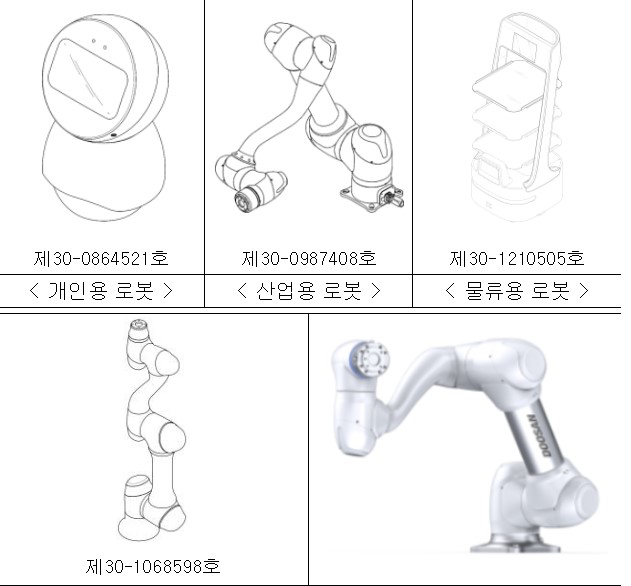Robots Get a Design Makeover
Korean Intellectual Property Office Announces Robot Design Analysis Results Anticipated to Be Highly Useful for Robot Design Development

The Korean Intellectual Property Office (KIPO Commissioner Kim Wan-ki) announced on July 31 the results of an in-depth analysis of robot design application trends. The analysis revealed a significant growth in the design applications for collaborative robots which work alongside humans with an average annual increase of 19.5% over the past 20 years.
This analysis report was prepared not only as a reference for design examiners to efficiently review robot-related designs but also to assist the industry in researching and developing robot designs.
The report categorizes robot-related design applications submitted to major patent offices and organizations in countries such as South Korea the United States Japan China Germany the European Union and the World Intellectual Property Organization (WIPO). These are divided by robot usage into personal robots* industrial robots and logistics robots and further subdivided by design characteristics for in-depth analysis.
Robots developed primarily for providing information including education and emotional communication rather than physical labor.
Industrial Robots Account for Over 40% of Robot Design Applications Logistics Robots on the Rise
From 2003 to 2022 robot design applications submitted to major patent offices and organizations have shown a general increase with an average annual growth rate of 8.3% over the past 20 years.
Specifically design applications for industrial robots used in manufacturing have consistently accounted for over 40% of total applications each year since 2003 showing a gradual upward trend.
Design applications for personal robots once a promising field have declined from a cumulative application proportion of 44.6% in 2003 to 23.4% currently. In contrast logistics robots have seen a sharp increase from just 2.3% of total robot design applications in 2003 to 26.9% today.
Collaborative Robot Design Applications Surge Averaging 19.5% Annual Increase Over 20 Years
Among industrial robots the design applications for collaborative robots or co-bots have surged averaging a 19.5% annual increase over the past 20 years. Since 2017 collaborative robot applications have surpassed those for vertical multi-joint robots a traditional stronghold in the industrial robot sector maintaining this lead through 2022 (except for 2018).
Collaborative robots are designed to operate in the same space as humans working alongside them. They are generally smaller in size and capable of delicate movements akin to a human hand featuring smooth and organic exteriors to facilitate human-robot interaction.
These robots are already active in various fields including smart factories assembling precision electronic products hospital operating rooms and coffee shops. They are expected to continue growing with related markets such as healthcare and advanced food technology.
Changjin Moon Director of the Design Examination Policy Division at KIPO stated “As the advanced robot field has been selected as a national strategic technology we expect that in-depth analysis of robot design application trends and providing this information to the industry will be highly useful for our companies in developing robot-related designs. We will review industry feedback on this analysis to consider expanding design analysis to other national strategic technology fields such as aerospace.”
The analysis report is available for download by anyone from the IP Trend menu under the IP Story section on DesignMap (www.designmap.or.kr). For more detailed information inquiries can be directed to the Design Examination Policy Division of KIPO (☎ 042-482-5766).
Website: : http://www.wip-news.com/news/articleView.html?idxno=24450
